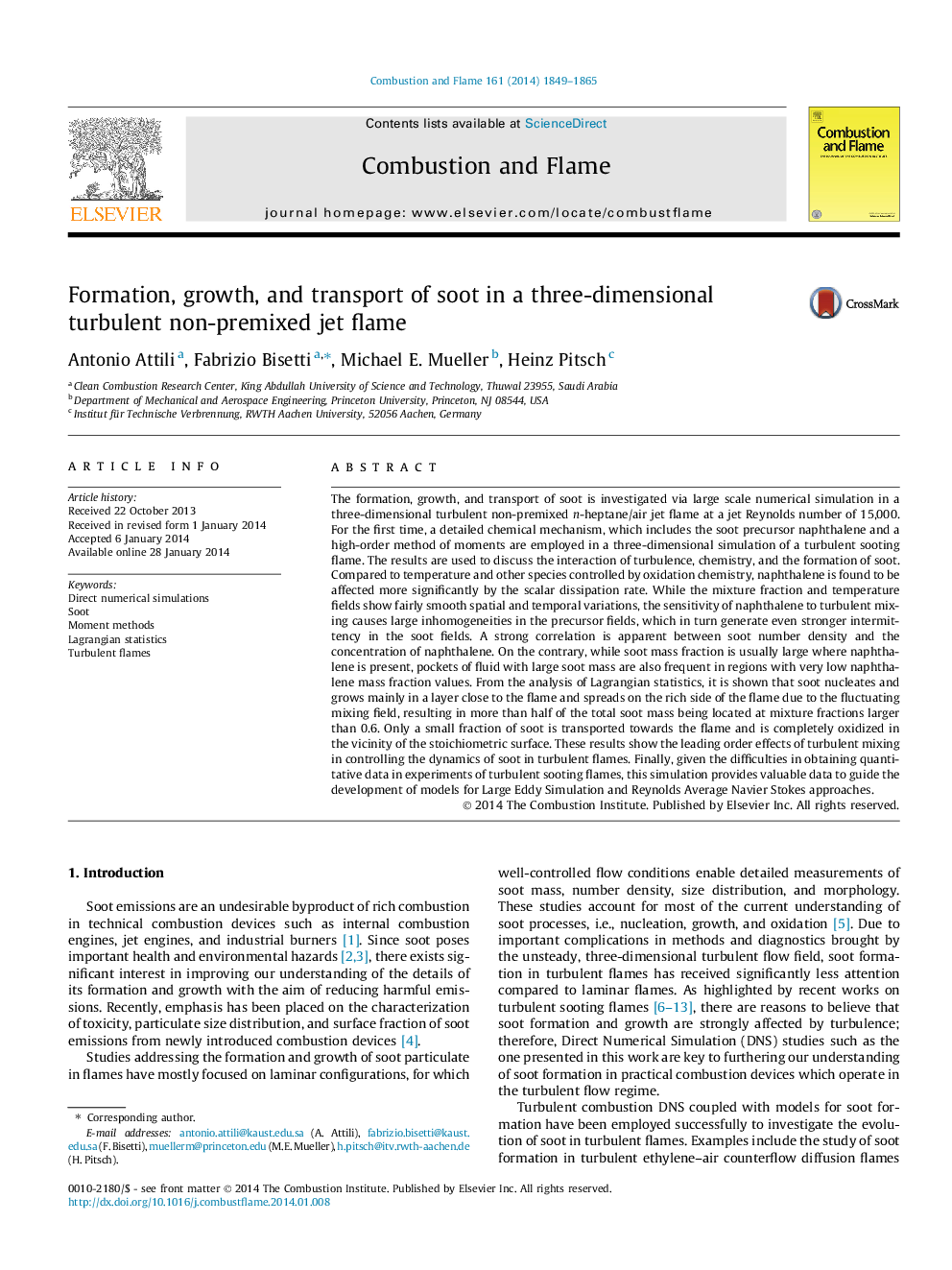| کد مقاله | کد نشریه | سال انتشار | مقاله انگلیسی | نسخه تمام متن |
|---|---|---|---|---|
| 168664 | 457945 | 2014 | 17 صفحه PDF | دانلود رایگان |
The formation, growth, and transport of soot is investigated via large scale numerical simulation in a three-dimensional turbulent non-premixed n-heptane/air jet flame at a jet Reynolds number of 15,000. For the first time, a detailed chemical mechanism, which includes the soot precursor naphthalene and a high-order method of moments are employed in a three-dimensional simulation of a turbulent sooting flame. The results are used to discuss the interaction of turbulence, chemistry, and the formation of soot. Compared to temperature and other species controlled by oxidation chemistry, naphthalene is found to be affected more significantly by the scalar dissipation rate. While the mixture fraction and temperature fields show fairly smooth spatial and temporal variations, the sensitivity of naphthalene to turbulent mixing causes large inhomogeneities in the precursor fields, which in turn generate even stronger intermittency in the soot fields. A strong correlation is apparent between soot number density and the concentration of naphthalene. On the contrary, while soot mass fraction is usually large where naphthalene is present, pockets of fluid with large soot mass are also frequent in regions with very low naphthalene mass fraction values. From the analysis of Lagrangian statistics, it is shown that soot nucleates and grows mainly in a layer close to the flame and spreads on the rich side of the flame due to the fluctuating mixing field, resulting in more than half of the total soot mass being located at mixture fractions larger than 0.6. Only a small fraction of soot is transported towards the flame and is completely oxidized in the vicinity of the stoichiometric surface. These results show the leading order effects of turbulent mixing in controlling the dynamics of soot in turbulent flames. Finally, given the difficulties in obtaining quantitative data in experiments of turbulent sooting flames, this simulation provides valuable data to guide the development of models for Large Eddy Simulation and Reynolds Average Navier Stokes approaches.
Journal: Combustion and Flame - Volume 161, Issue 7, July 2014, Pages 1849–1865
